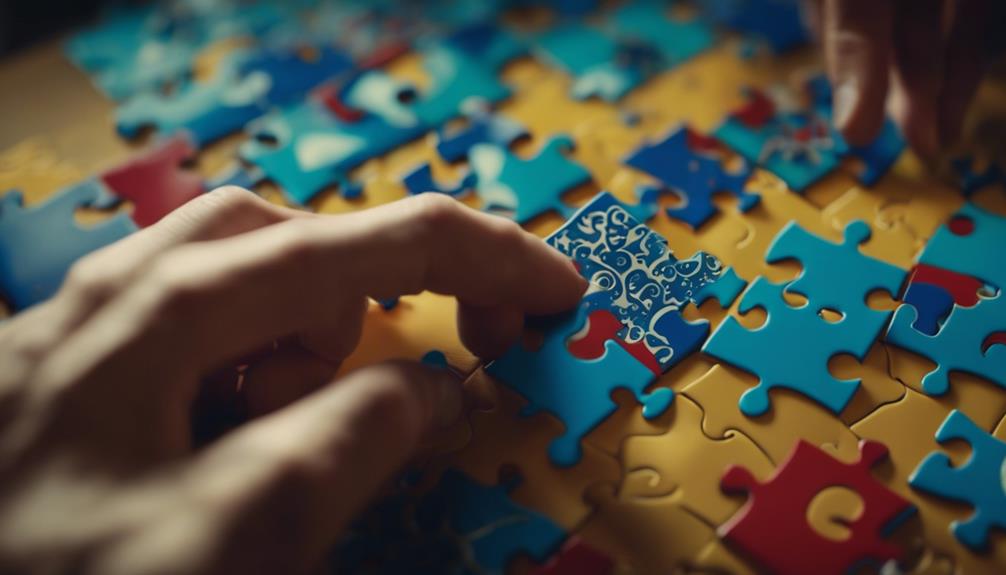Resolving Authorship in Machine-Made Art
The issue of authorship in machine-created visual art challenges old legal systems and makes us rethink what creativity and originality mean today. As technology and artistic expression merge, the relationship between human creativity and artificial intelligence becomes more complicated. This situation raises important questions about art’s future.
Understanding who the actual author is in the digital age is tricky. This discussion leads to ethical, legal, and philosophical debates about art in today’s world. We’re on a path that could change our culture, making us think about the impact of our decisions on art’s future.
Key Takeaways
The debate on authorship in AI-created art challenges traditional legal frameworks and prompts a reevaluation of creativity and originality. As technology integrates with artistic expression, discerning the actual creator becomes increasingly complex. This evolution sparks discussions on the ethical, legal, and philosophical implications for the art world.
Key Takeaways:
- AI integration complicates artistic authorship.
- Legal systems struggle with digital age creations.
- Debate impacts the cultural perception of art.
AI and human collaboration blur the creative boundary. Legal debates spotlight the need for updated frameworks. Discussions influence how we view future art, emphasizing the importance of adaptability in cultural norms and legal structures.
Defining Authorship
Understanding who gets to be called the creator when it comes to visual art made by machines is a bit of a puzzle. With Artificial Intelligence (AI) stepping into the art scene, the old rules about who creates art are being turned on. Now, we must consider not just the human behind the machine but maybe even the machine itself or the person who uses it to make something new.
Is the programmer who built the AI the true artist since they set up all the rules for how it is created? Or should the AI get the credit because it’s putting pixels to the screen without a human telling it what to do every step of the way? Then there’s the user who picks what the AI works with – maybe they’re the artist?
This isn’t just a fun debate for coffee shops; it impacts copyright and who owns what. Laws that used to fit nicely around human-made art don’t know what to do with stuff made by or with AI. We’re in a time where we need to think about what makes something an original creation and who or what gets to claim it.
Historical Copyright Context
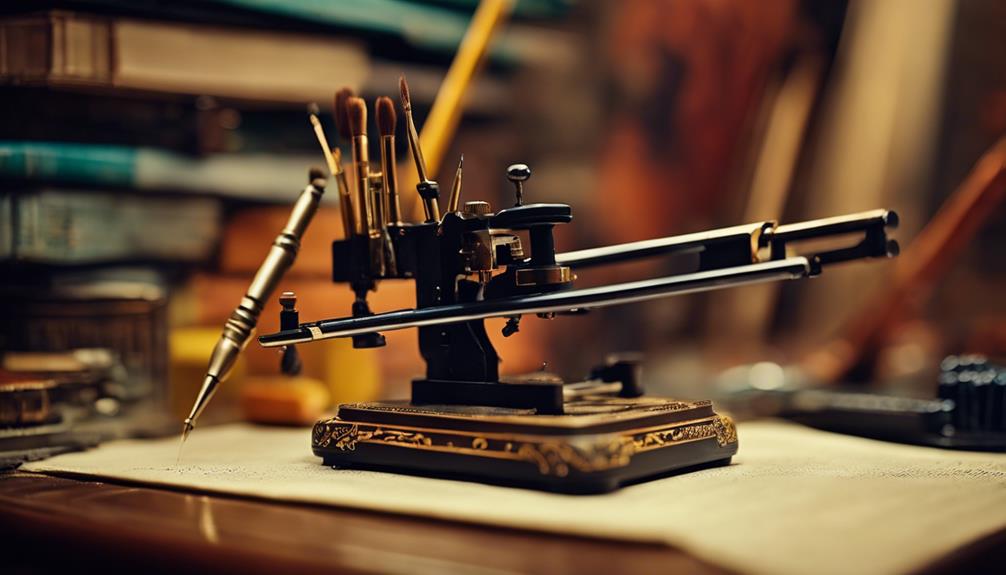
The history of copyright laws has evolved significantly, from its early days of safeguarding artists’ creations to dealing with the nuanced issues brought about by the internet age. This evolution is crucial for understanding who gets credit for machine-generated art. As laws have been updated to cover new creative methods, defining who owns and authored machine-made visual arts has become increasingly important. This background is vital to resolving current disagreements and guiding policies on intellectual property in the visual arts sector.
Copyright laws began with simple intentions but have grown to address the complexities of art in the digital age. This history helps us figure out who should be credited for machine-created art. With the rise of digital creation, establishing clear ownership and authorship rules for art made by algorithms has become a priority. Understanding this evolution is vital for settling debates and crafting future intellectual property policies in the art world.
Early Copyright Laws
Rooted in the early 1700s, the Statute of Anne was a game-changer for copyright laws, laying the groundwork for today’s author rights and restrictions. This historic act was the first to recognize authorship rights while setting boundaries on copyright duration, reshaping how we view intellectual property. The journey from the Statute of Anne to current copyright rules reflects our changing perception of what it means to be an author, especially with the rise of machine learning technologies.
| Year | Legislation | Impact |
|---|---|---|
| 1710 | Statute of Anne | Kickstarted authorship rights |
| 1787 | U.S. Constitution | Shaped U.S. copyright laws |
| Modern Era | Digital Copyright | Adapts to machine learning |
This table shows the shift from the initial copyright laws to today’s adaptations for technological progress and evolving ideas of authorship.
Copyright laws started in the 18th century with the Statute of Anne, setting the stage for how we think about authors’ rights today. It was a big step in acknowledging that authors should have control over their work for a certain period. Since then, copyright laws have evolved, especially with the introduction of digital copyright rules, to address challenges posed by technology like machine learning.
This evolution underscores the importance of copyright laws keeping pace with technological advances to protect authors’ rights while fostering innovation and creativity.
Artistic Works Protection
The history of copyright laws, beginning with England’s Statute of Anne, is critical in protecting the rights of creators, especially today as we deal with AI art. The game’s rules are changing because AI is blurring the lines of who creates art.
The idea that a work needs to be fixed in a tangible form to be protected is fundamental. This rule helps ensure that creators can claim ownership of their work. Creators’ rights are a big deal because they show we value human creativity in our laws.
However, AI-created art is shaking up traditional ideas about who or what can be an author. This shift means laws need to evolve to keep up with new types of art made by machines. Finding a balance that respects all kinds of creativity, whether caused by humans or AI, is essential.
In short, we’re in a time when the legal system must adapt to new challenges. The goal is to make sure everyone’s creativity, no matter how it’s produced, gets the protection it deserves. This includes ensuring the laws work well in situations we hadn’t imagined before, like AI-generated art.
Digital Era Challenges
In the world of copyright laws, the rise of technology has thrown us a curveball, especially when it comes to visual art created by AI. Initially, these laws were set up to protect works made by people, not machines. We’re in a tricky spot because the rules about art from a computer program aren’t clear. This gap in the law is causing a lot of headaches, sparking debates about how we should recognize and protect the rights of those who create art with the help of AI.
The crux of the matter is finding a way to update our laws to reflect the reality of how art is made today. We need innovative solutions to ensure that everyone who contributes to creating art, whether human or a bit of silicon, gets the credit and protection they deserve. This isn’t just about keeping lawyers busy; it’s about ensuring artists and creators can thrive in a world where technology plays a significant role in creativity.
AI and Creative Process
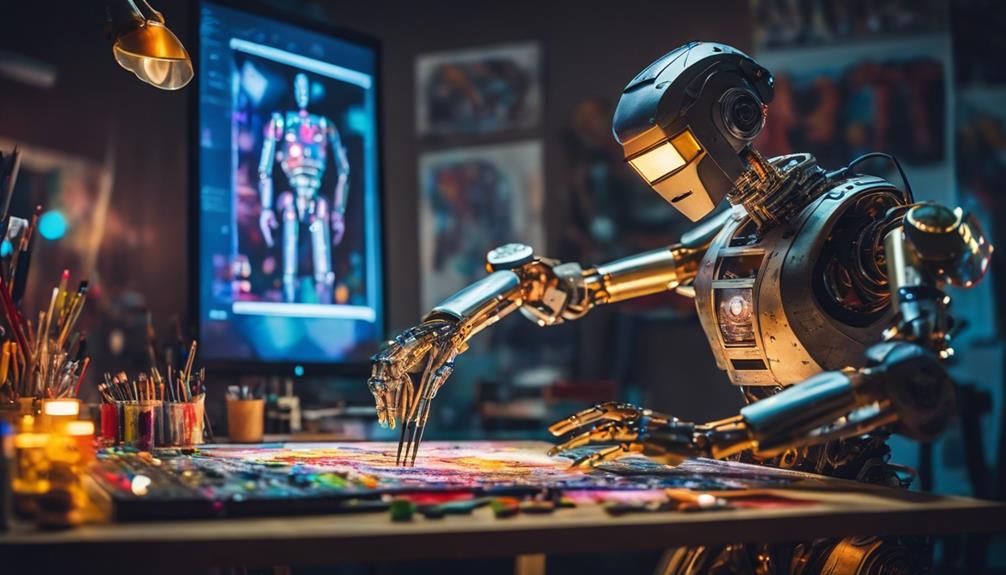
The use of artificial intelligence in visual arts creation is growing, leading to new discussions about ethics and creative collaboration in this field. Tools like DALL·E 2 and Stable Diffusion are changing how we create art, making us rethink who owns an artwork and who should be credited. This situation creates a need to look closely at how laws about copyright apply to AI-created art. It might change how we think about ownership and creativity in art.
AI’s role in art is not just about technology but the questions it raises. How do we decide who the author of an AI-generated piece is? And what does this mean for the rights of the artist? These questions are vital as they could reshape how we view art and intellectual property. Understanding this is crucial for anyone involved in the art world today.
AI’s Role in Art
The integration of artificial intelligence into the world of visual arts has transformed how artists create, making way for innovative and unique pieces. These advancements allow for a new partnership between technology and creative minds.
Platforms such as DALL·E 2, Midjourney AI, and Stable Diffusion are at the forefront of this artistic evolution. They are essential tools for artists looking to push the boundaries of traditional art. DALL·E 2, in particular, stands out for its ability to craft realistic images based on text descriptions, showcasing the power of AI in art.
OpenAI is leading the charge in addressing copyright and trademark concerns, which is crucial as the art world merges with technology. This merging raises essential questions about who owns an AI-generated artwork and who gets credit for it. These are not just academic questions; they have real-world implications for artists and legal professionals.
Ethical Considerations
The ethical landscape of AI in the creative process presents a series of intriguing dilemmas, especially when considering the authenticity and originality of art made with the help of AI tools like DALL·E 2. These dilemmas bring up questions about who really ‘creates’ art when an AI is involved and challenge our traditional ideas of what it means to be creative.
When we talk about AI and creativity, we’re digging into the balance between using new technology and keeping the unique perspective humans bring to art. It’s crucial to have open discussions about how much of an artwork’s value comes from the human touch versus the technology used to create it. This conversation is essential for ensuring that technological advancements don’t overshadow the deep, personal connection that art can evoke.
In this era of rapid technological development, the debate over authorship in AI-generated art is more relevant than ever. It forces us to reconsider what it means to be an artist and what constitutes original work. These discussions are not just academic; they have real implications for creators, consumers, and the legal frameworks that protect creative works.
To navigate these complex issues, it’s essential to keep the dialogue open and inclusive, recognizing the potential of AI to transform the creative landscape while valuing the irreplaceable human intention that sparks true innovation in art.
Future Creative Collaborations
In the world of creativity, AI and human artists teaming up is a game-changer. This blend of talent is reshaping how art is made, who gets to make it, and what it means to be a work of art.
Artists find that AI offers new tools and methods that make their creative process more dynamic. Working with AI, artists are dipping into styles and ideas they might not have considered before. This human and machine creativity mix sparks innovations that challenge old-school art norms. For example, tools like DALL·E 2 push artists to think outside the box, leading to groundbreaking work.
These collaborations are not just about using new gadgets. They’re making us rethink the relationship between artists and their tools, encouraging a future where art is more diverse and innovative. This partnership between humans and AI is not just changing the art world but setting the stage for how we understand creativity.
Legal Frameworks Reviewed
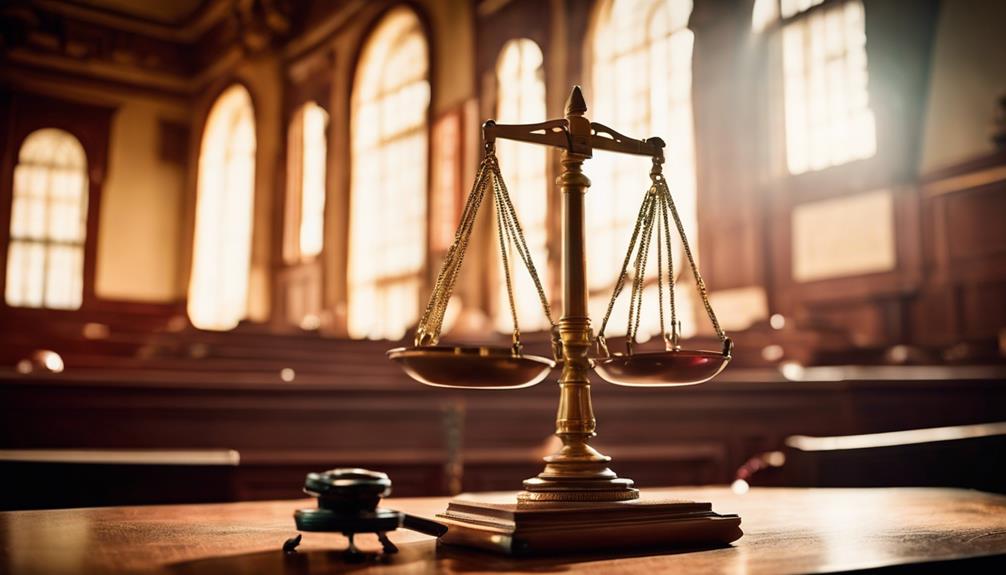
Several legal frameworks are vital in defining who owns and creates machine-made visual art, a more complex task as technology evolves. At the heart of these frameworks are copyright protection and intellectual property laws aimed at defending the rights of creators. Yet, the rise of AI-generated artwork introduces a new challenge: figuring out who the actual author is when a machine, programmed and designed by humans, takes part in the creative process.
Understanding copyright laws is vital, as they lay the groundwork for resolving disputes over who created something. Intellectual property rights help decide ownership, but technology and art creation’s rapid advancement adds complexity. The courts have played a crucial role in navigating these challenges, with several cases setting essential precedents that help clarify the law.
Having clear rules for determining authorship in machine-created visual art is crucial. As technology progresses, so must the laws governing it through constant review and adaptation. This ensures that our legal principles stay relevant and effectively tackle the unique mix of art, technology, and law.
Ethical Implications
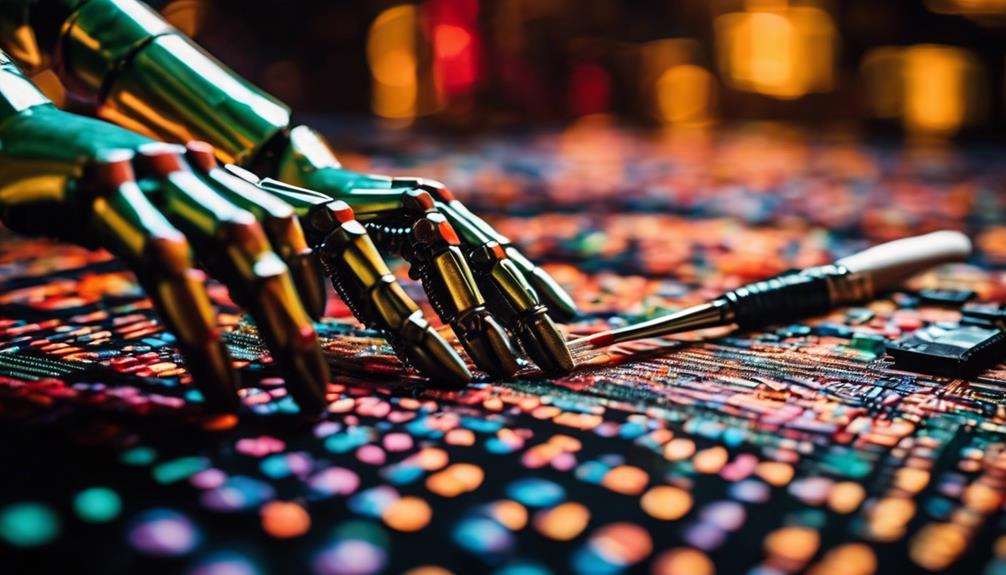
Exploring the ethical landscape, we must consider AI’s effects on artistic creation and ownership. The emergence of AI in producing visual arts shakes the very foundation of what we understand by artistic creation, posing severe ethical debates. Questions arise about the effects on traditional artists and the value of human creativity in a world where machines can rival or even outdo human artistry. There’s a worry about fairness in the art market, especially since the Copyright Office only acknowledges works created by humans, making a clear distinction in authorship rights.
The possibility of copyright infringement looms with AI’s ability to mimic or adapt existing copyrighted works without proper acknowledgment or consent. This raises concerns about the ethical use of AI in art. We must also consider how these technological advances change our interaction with art and the role of artists in a society increasingly shaped by technology.
A deep understanding of AI’s role in art and a commitment to valuing human creativity and expression are essential to navigating these ethical waters.
Philosophical Perspectives
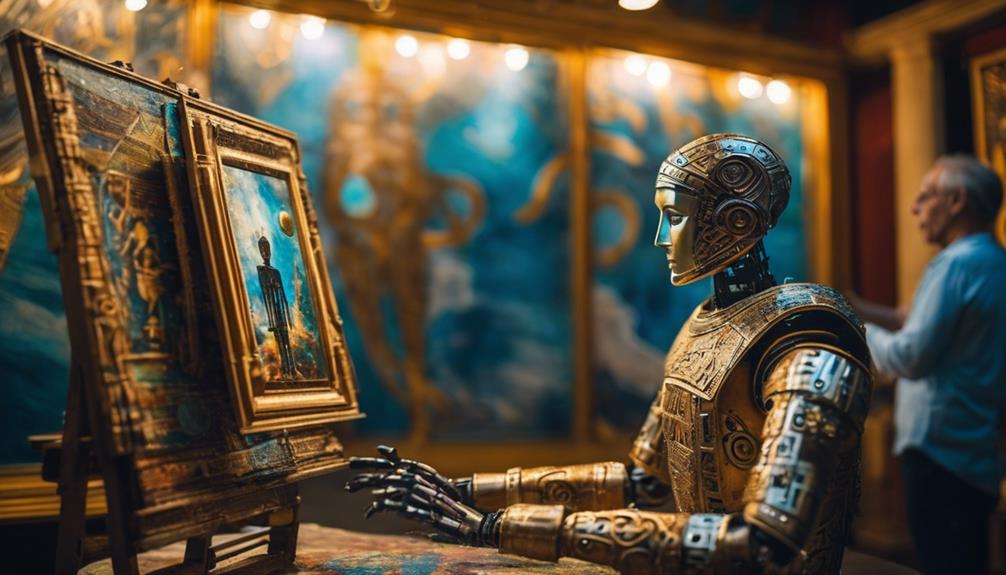
Exploring the realm of philosophical perspectives sheds light on the intricate balance between human creativity and the automated processes of creating visual art through machines. Philosophers such as Locke, Kant, and Hegel have highlighted the importance of labor, personality, and communication in art creation. This brings up the debate on authorship when algorithms play a part in the creative process.
Recent thinkers like Barthes and Foucault have stirred the pot by questioning these age-old notions of authorship, proposing a more scattered approach. This change is crucial for the copyright issues surrounding machine-generated visual art, as it blurs the lines between human contributions and those of machines.
| Philosopher | Key Contribution to Authorship |
|---|---|
| Locke | Emphasized labor and personal input |
| Kant | Highlighted creativity and independence |
| Hegel | Viewed authorship as communication |
| Barthes/Foucault | Challenged traditional authorship |
To understand authorship in machine-made art, it’s necessary to look closely at the roles of developers, AI algorithms, and users. This philosophical exploration is vital in shaping legal and ethical standards and making informed authorship and copyright distribution decisions.
Stakeholder Roles
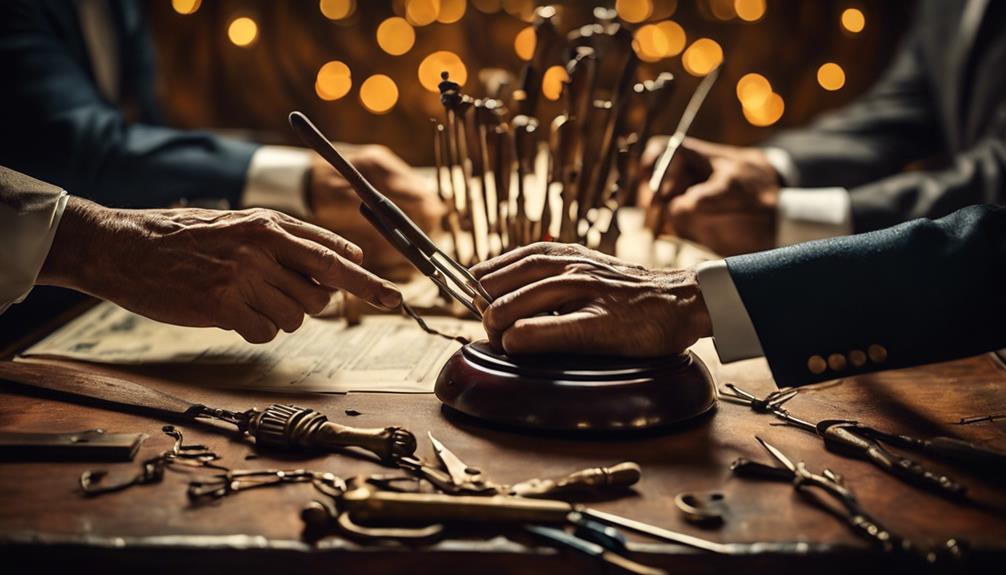
Understanding the roles of different players in AI-assisted visual art is vital to solving disputes over ownership and copyright. As AI technologies like DALL·E 2 become more common in art creation, figuring out who owns a piece of art becomes more complicated. This is especially true when art is made with the help of algorithms.
Artists are at the forefront, using AI tools to craft visual pieces. They’re at the center of debates over who owns an artwork created with AI’s help, questioning the uniqueness of such pieces. Developers, the brains behind AI art applications, could be seen as having a hand in the creative process, making authorship even more complex. End Users might also shape the final piece with their choices, inserting themselves into the conversation about who made the art. Legal Experts have the tough job of navigating copyright laws to determine who has the rights to AI-generated art.
These groups are crucial in shaping discussions around art made with AI, each bringing their view to debates over who truly ‘creates’ a piece.
Innovative Resolution Methods
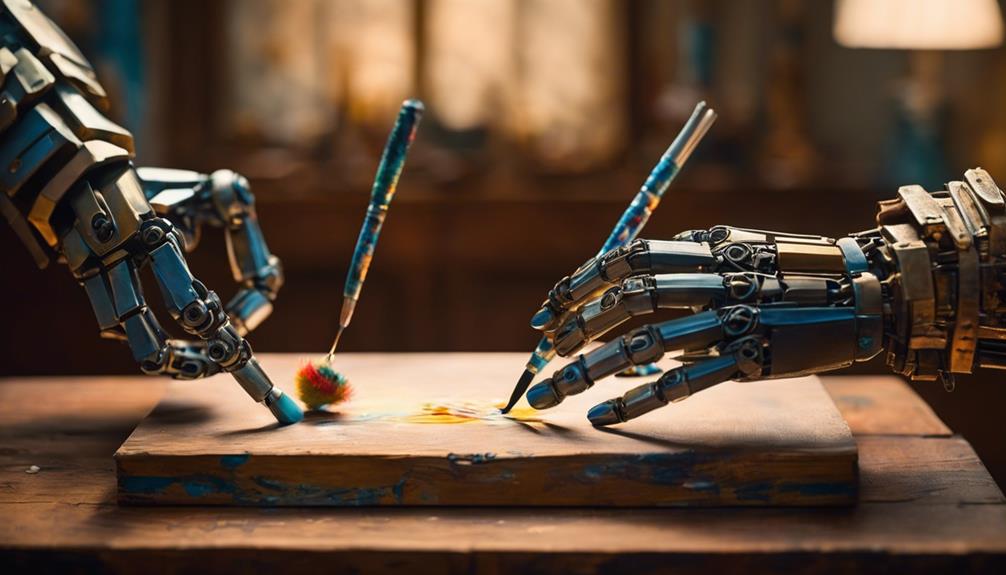
Exploring innovative ways like mediation and arbitration can be an intelligent move for solving authorship issues in machine-created visual art. These methods offer a balanced and quick way to handle human creativity and machine input disputes in art creation. Setting up rules that make authors agree to arbitration or mediation before their work gets published can help avoid authorship problems.
Supporting these resolution techniques as part of ethical publishing shows a dedication to keeping things fair and just in recognizing authorship in machine-created visual art. Getting dispute resolution services involved early on helps the art and academic worlds avoid the damage caused by unresolved authorship conflicts. Plus, making everything clear and keeping everyone involved in the loop through these methods can significantly lower the chances of disputes happening.
In short, using alternative dispute resolution methods is not just a way to solve authorship issues in machine-created visual art; it also encourages a culture of fairness and openness in academic and art circles.
Case Studies Analysis
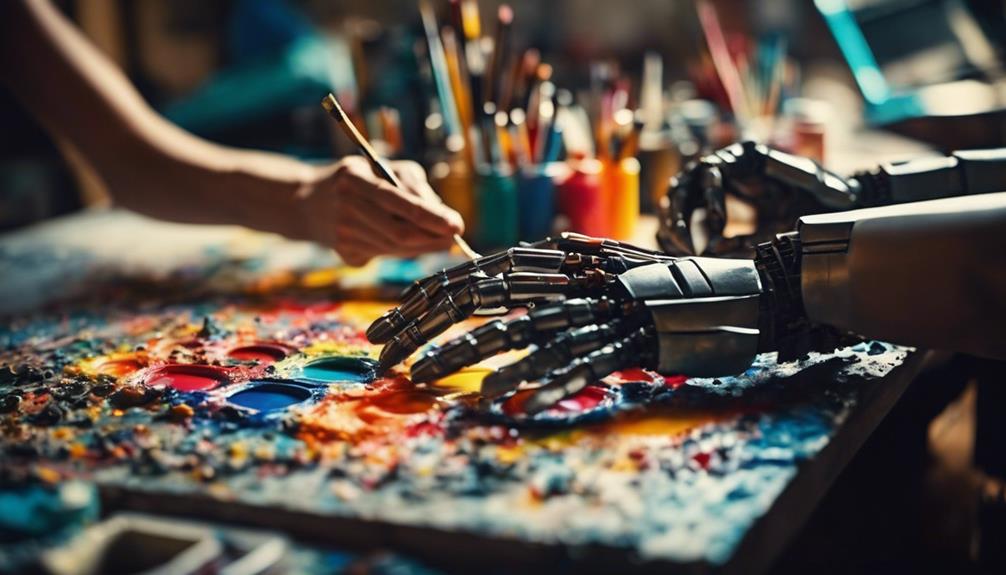
Looking into case studies related to machine-created visual art shows how tricky it can be to figure out who owns the work. These examples help us understand the complex relationship between the creators, their technology, and the laws protecting their creations. They also highlight ethical questions that need clear answers as the field of AI-generated art keeps growing.
Understanding these challenges is crucial because it shows us the need for updated rules in art and technology. It’s about figuring out how to fairly credit human artists and the machines that help them create new pieces. This discussion is becoming more urgent as more art is made this way.
Analyzing Legal Disputes
Understanding legal battles over visual art machines create requires a deep dive into specific legal cases. This helps determine how courts handle copyright issues and ownership rights regarding art made by artificial intelligence. The blend of intellectual property laws with AI’s capability to create art brings up difficult questions about:
- How copyright laws apply to art made by AI.
- Who holds the rights to AI-created art?
- How do we determine who made the art when a machine created it?
- What past court decisions tell us about AI art.
These issues highlight the challenges of dealing with copyright laws today—our traditional views on who creates art and how are being reshaped as technology evolves.
In breaking down these topics, we see the need for clear rules about copyright when it comes to AI art. Figuring out who owns an AI-created piece and establishing the artist’s rights requires looking at existing laws in new ways. Decisions made in court cases so far guide us through these murky waters.
This exploration is vital in today’s tech-driven world. It helps us understand how to protect creative works in a time when machines can be artists, too.
Attribution Challenges Explored
Several studies shed light on the complex issues surrounding ownership and attribution in the realm of visual art created by machines, pointing out the significant legal and ethical questions. These examples demonstrate the difficulties in determining who gets credit for AI-created artworks, challenging traditional ideas of authorship.
A closer look at specific incidents reveals how the legal framework adapts, emphasizing the pressing need for clear rules and ways to solve these problems. It’s crucial to find measures to manage and avoid authorship disputes, ensuring artists are pretty recognized in the burgeoning field of machine-made art.
Understanding these dynamics is critical to successfully balancing innovation, law, and ethics in art.
Ethical Considerations Unveiled
Exploring case studies around machine-made visual art unveils deep ethical questions about who gets credit for the art. It’s a tricky area tangled with both legal and moral issues. One major problem is figuring out if the person who made the AI or the AI itself should get the credit for the artwork it creates. There are also big questions about how current copyright laws, which weren’t made with AI in mind, apply to art created by machines.
Another point of debate is whether we should see AI as possible authors or co-authors when they help create art. This is a big question because it could change how we see creativity and who can be considered a creator. Lastly, not sorting out these authorship questions could slow down the growth and innovation in the AI art world.
Understanding these challenges is critical to finding a way forward that respects human and machine contributions to art.
Future of Artistic Creation
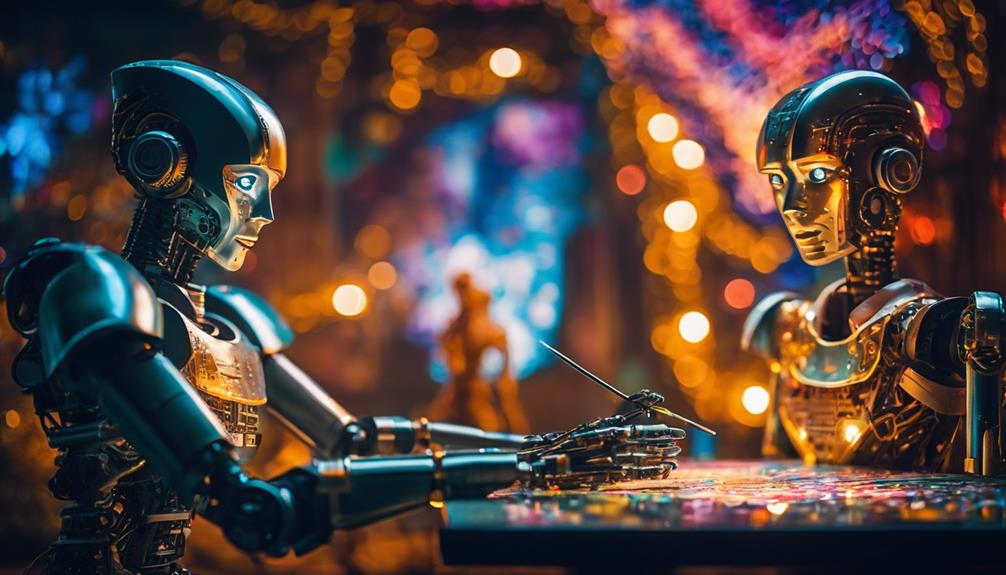
Introducing AI technologies like DALL·E 2, Midjourney AI, and Stable Diffusion has significantly changed how we think about creating art. These tools can make unique pieces from simple text instructions, questioning the old rules of who owns an idea or creation.
| AI Technology | Artistic Impact | Challenges |
|---|---|---|
| DALL·E 2 | Turns words into illustrations | Issues with copyright |
| Midjourney AI | Produces creative images | Ethical worries |
| Stable Diffusion | Allows anyone to create art for free | Disputes over who made it |
| OpenAI Efforts | Tackles legal problems in AI-made art | Questions about making money from it |
| What’s Next | Makes more creative paths possible | Figuring out who owns what |
This summary shows how AI opens new doors for creativity, causing further problems about who created and owns something. As AI art becomes more common, everyone involved must think carefully about laws and ethics to keep making art fair and exciting.
Avoiding specific phrases and employing a straightforward and engaging approach helps clarify the impact and challenges of AI in artistic creation. Highlighting AI technologies, creativity, and ownership emphasizes the core issues.
Frequently Asked Questions
What Are the Problems With Ai-Generated Art?
- Ethical issues challenge artist rights in AI art creation.
- The authenticity of non-human-made art stirs debate.
- Creative responsibility and copyright issues complicate AI artwork.
Who Owns Copyright on Ai-Generated Art?
- Human creators hold AI art’s copyright, sparking debate.
- Legal clarity is needed for creative rights and profits.
- Ethical concerns arise from AI’s role in creativity.
What Are the Legal Issues With AI Art?
- Legal challenges arise from unclear copyright ownership.
- Intellectual property rights confuse AI-created art.
- Potential for market upheaval with AI in the art scene.
What Is Authorship in Art?
- Art authorship highlights the creator’s identity.
- It emphasizes creative ownership.
- Acknowledges the artist’s unique contribution.
